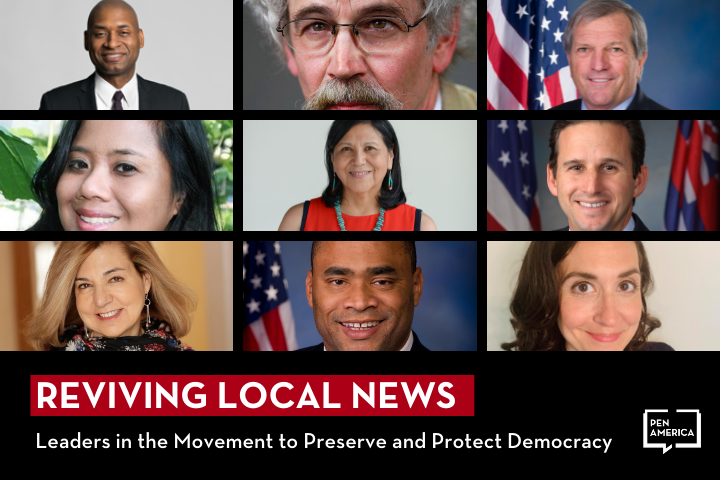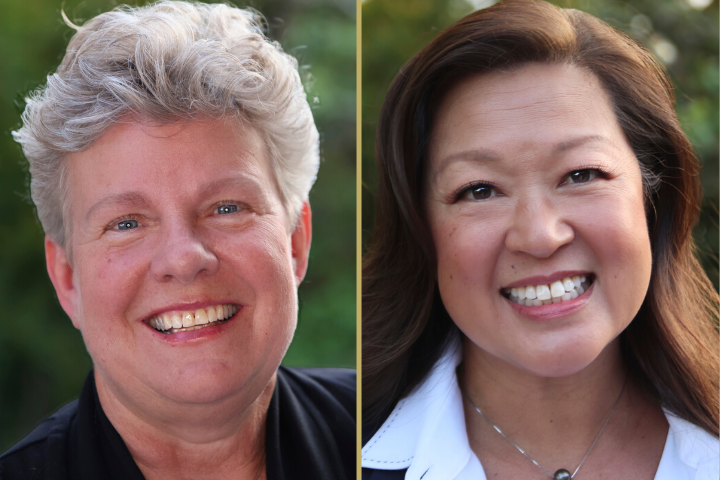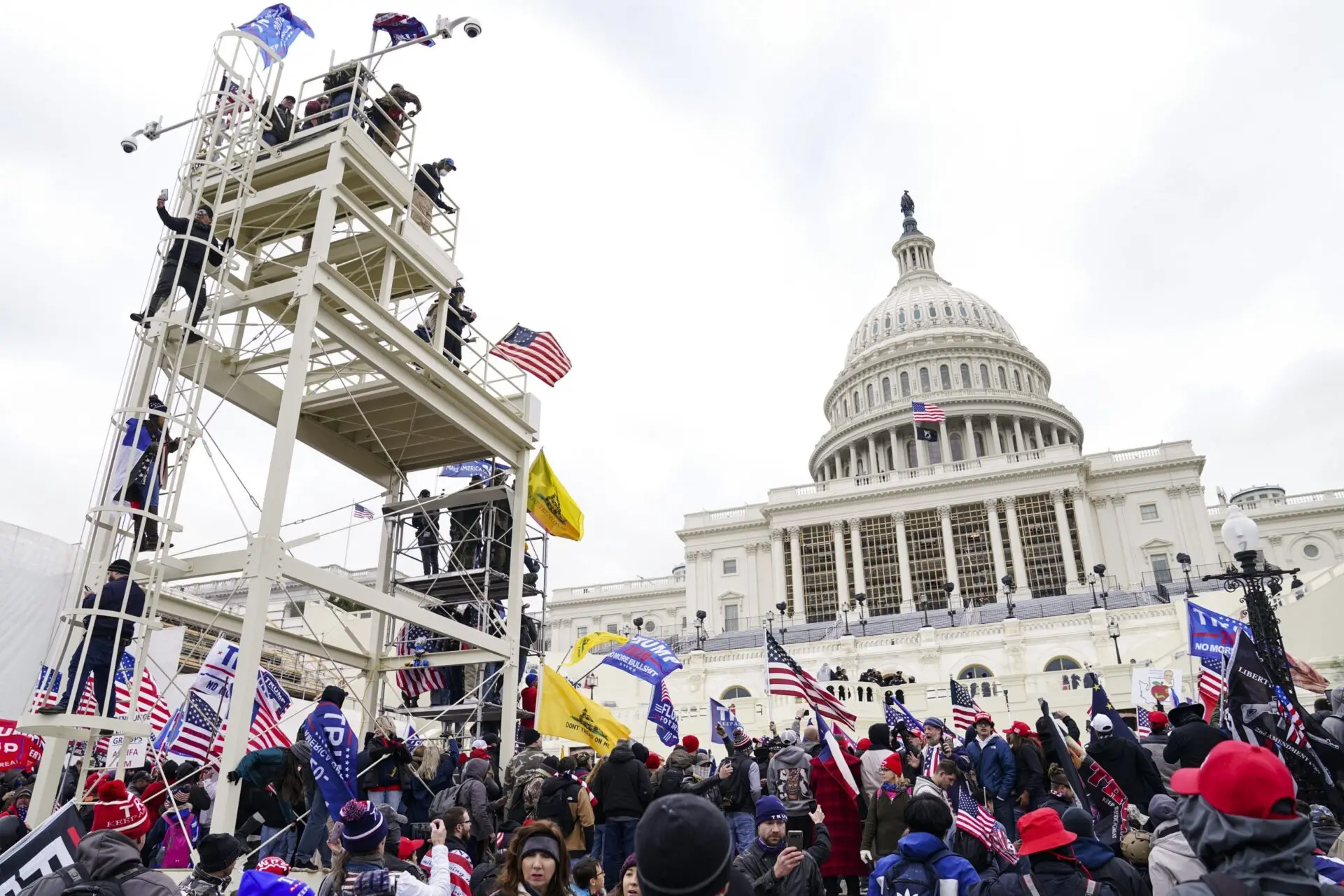Unhelpful Guidances Increase Gag Orders’ Chilling Effect
Monthly Roundup, April
This post is part of a series from PEN America tracking the progress of educational gag orders and censorious legislative efforts against educational institutions nationwide. These bills are tracked in our Index, updated weekly.
Four more educational gag orders became law in April, as well as one new executive order. After reviewing those laws and policies in this month’s Roundup, we examine guidance documents — rules issued by state agencies after the passage of educational gag orders that are intended to help schools interpret vague or confusing elements of the laws. We find that instead of clarifying the laws, guidance documents have muddied the waters, further eroding academic freedom and students’ right to learn. The situation in Iowa is especially dire — read on to learn about a student who said a lecture on the 3/5ths Compromise left their class confused because the teacher couldn’t explain why it existed.
- Since January 2021, 183 educational gag order bills have been introduced in 40 different states
- 19 have become law in 15 states
- 4 additional states have enacted educational gag orders via policies or executive orders
- 122 million Americans live in the 19 states where an educational gag order is in effect
- 88 educational gag orders are currently live, of which 75 are still under consideration this legislative session
Of those currently live:
- 83 target K-12 schools
- 30 target higher education
- 47 include an avenue for punishment for those found in violation
New Laws
- An executive order from Governor Kristi Noem in South Dakota prohibits public K-12 schools from promoting, endorsing, or compelling the adoption of certain ideas related to race, color, religion, sex, ethnicity, or national origin.
- Tennessee’s HB 2670 bans public colleges and universities from making certain ideas related to race, sex, and US history part of any seminars, workshops, trainings, and orientations. As with SB 623, passed in Tennessee last year, the law forbids training that “promotes division between, or resentment of,” any “class of people” – a prohibition so broad and vague that it could apply to enslavers or Nazis. Violators may be sued via a private right of action.
- Florida’s HB 7, also known as the “Individual Freedom” or “Stop W.O.K.E.” Act, was signed by Governor Ron DeSantis on April 22. PEN America previously analyzed this law in depth. Employers found to have violated HB 7 may be sued under Florida’s civil rights statute. No explicit penalty is given for educators, but a separate bill would punish universities with a loss of state funding.
- Kentucky’s SB 1 became law after the legislature voted to override Governor Andy Beshear’s veto. The law requires that public K-12 instruction be “consistent” with certain ideas related to race, sex, and American history and culture. Furthermore, all instruction on “current, controversial topics” must be “relevant, objective, nondiscriminatory, and respectful to the differing perspectives of students.”
- Governor Brian Kemp was scheduled to sign Georgia’s HB 1084 on our publication date, April 28. The law forbids K-12 schools from promoting certain “divisive concepts” in any curriculum, classroom instruction, or mandatory training program. Failure to comply may result in professional discipline and monetary penalty.
The Problem with Guidances
A prime concern of PEN America’s advocacy against educational gag orders for the past year has been that many are sloppily drafted and in some cases hastily passed. The most recent example is SB 1 in Kentucky, which, due to the rushed and rocky way the bill became law, inadvertently included a punishment of jail time for educators who teach certain topics the wrong way. Thankfully, this mistake was caught and quickly amended in a separate law. Nevertheless, the debacle illustrates the ongoing lack of thought or care that lawmakers have been putting into these bills.
One solution to this problem could come after the bills become law, when state agencies issue rules to help teachers, school administrators, and others interpret vague or contradictory legislative text. These guidances, one might hope, could smooth over the rough patches of the text, define key terms, and explain to nervous educators what they can and cannot say.
It has not worked out that way.
Twelve educational gag orders passed in 2021, of which ten are still law. Of these ten, only five have been accompanied by an official guidance: Iowa HF 802, New Hampshire HB 2, Oklahoma HB 1775, Tennessee SB 623, and Texas SB 3. The other five states that passed laws last year (Arizona, Arkansas, Idaho, North Dakota, and South Carolina) have published nothing. Teachers, administrators, and parents in these states are no more informed today about the application of these laws than on the day they were passed. In the absence of formal guidances, one recent study showed, school districts and administrators have interpreted these laws in a wide variety of ways, with extreme chilling effects when administrators overinterpret the circumstances where a law applies.
If anything, this actually understates the extent of the problem. Most of the guidances that have been published are themselves vague and unhelpful. For instance, Texas’s guidance for SB 3 is essentially a restatement of the law, providing little additional context or tools for interpretation. Tennessee’s guidance for SB 623 has much to say about how schools will be investigated and punished, but very little to guide the regulation of teachers’ speech.
Then there is Oklahoma. Following the passage of HB 1775 in May 2021, the state published a guidance to help facilitate its implementation in public K-12 schools. The guidance has many confusing passages and arguably expands the scope of the law beyond the legislature’s intent, for instance by banning certain kinds of staff diversity trainings (see Public Comment #2 on page 1 here). Nevertheless, it represents a legitimate attempt to help public schools put the law into practice.
Except HB 1775 also applies to colleges and universities, prohibiting them from including (among other things) any “orientation or requirement that presents any form of race or sex stereotyping or a bias on the basis of race or sex.” All manner of questions present themselves: What do “stereotyping” and “bias” mean in this context? Does a required course count as a “requirement”? If so, can a professor discuss examples of historical racism in the classroom? Or does that constitute “presenting” a racial stereotype or bias?
These are valid questions. They are also precisely the ones that Oklahoma’s colleges and universities began asking shortly after HB 1775’s passage. But nearly one year later, no guidance for higher ed has been published. And this is despite the fact that HB 1775 explicitly requires the State Regents for Higher Education to “promulgate rules…to implement the provisions” of the law. Predictably, the result has been institutional over-enforcement, self-censorship, and the erosion of academic freedom.
Spotlight: Iowa
But nothing in the country quite compares to the situation in Iowa. HF 802, which was passed in June of 2021, prohibits “specified defined concepts” related to race or sex from being taught in public schools. Students and teachers in Iowa say that law is already having a chilling effect on classroom speech, stifling conversations about racism, sexism, and American history. One high schooler has described how a lecture on the 3/5ths Compromise left most of the class confused because the teacher was unwilling to explain its purpose.
But higher education is different. HF 802 takes great pains to state that it does not apply to classroom instruction in community colleges or public universities. Nothing in the law, it states, shall be construed to “inhibit or violate the first amendment rights of students or faculty, or undermine a public institution of higher education’s duty to protect to the fullest degree intellectual freedom and free expression.”
What the law does say is that colleges and universities may not “teach, advocate, act upon, or promote” those concepts as part of any “mandatory staff or student training.” But so long as the training is voluntary, or the concepts are broached “as part of a larger course of academic instruction,” there should be no problem.
Open and shut, right?
Wrong.
In its guidance to community colleges, Iowa’s Department of Education immediately concedes that the word “mandatory” is defined nowhere in the law. As a result, it recommends that colleges exercise extraordinary caution in how they describe various events. For instance, saying that students are “encouraged to attend” an event should be avoided because they might mistakenly give the impression that attendance is mandatory.
But at least the Iowa DoE correctly recognizes that HF 802 does not apply to classroom speech. Iowa State University has shown much less common sense. In its initial guidance (published as an FAQ), it warns that “while the Act on its face distinguishes ‘trainings’ from ‘academic instruction’, it is possible that a course could be defined as a prohibited training if the course resembles and functions like a mandatory training.” As an example, the guidance describes a required course for an English degree. If the professor in that course were to discuss one of the prohibited concepts, “a violation of the Act is likely”.
At PEN America we have discussed how this maximal interpretation of the law chills classroom teaching. The Foundation for Individual Rights in Education has also explained as much in a letter it wrote to ISU leadership. But incredibly, the university has refused to back down and instead insists that its interpretation of words like “mandatory” and “training” is correct. Its response is worth quoting at length.
As noted in the FAQ, HF-802 expressly states that the university cannot “teach, advocate, act upon, or promote” specific defined concepts in “any mandatory staff or student training.” But the important term “mandatory staff or student training” is open to interpretation. Similarly, HF802 allows for the “discussion of the specific defined concepts as part of a larger course of academic instruction” and allows for the use of “curriculum that teaches the topics of sexism, slavery, racial oppression, racial segregation, or racial discrimination.” But again, the important terms “course”, “class”, and “academic instruction” are not specifically defined. Accordingly, the FAQ discusses the possibility that a class could be interpreted as a mandatory student training if the specifically defined concepts were “taught, advocated, acted upon, or promoted” in a class where those concepts were not germane to the general subject matter and where the class was required of all students regardless of their chosen field of study. Under these circumstances, there exists some risk that a program described as an academic course could nonetheless be reasonably classified as a mandatory student training, and therefore draw scrutiny under HF-802. [emphasis in original]
In other words, ISU insists that a law that explicitly focuses on mandatory training should be understood as applying to required courses. It also says that in the absence of further guidance from the state, terms like “course”, “class”, or “academic instruction” are essentially undefinable. As a result, the letter goes on, ISU has an obligation to provide faculty with “a framework to assess the risk that their activity might draw scrutiny under HF-802.”
Thankfully, ISU did eventually moderate its position somewhat. The current FAQ assures faculty that the “vast majority” of their courses are protected under the First Amendment and the university’s academic freedom policy. However, it qualifies this by saying if a faculty member is teaching a required course, they should take care to only discuss a prohibited concept when it is germane to the “overall subject matter and learning objectives of the course.” They should also strive to present the concept “in a way that promotes open discussion” among students. Failure to do so, the university warns “could draw scrutiny under the Act” and ultimately expose the faculty member to professional discipline and civil liability.
How ISU intends to handle instruction by third parties – for instance, a guest lecture that students are required to attend as part of a course – is anyone’s guess. Perhaps invited speakers will be warned against departing from their planned remarks. Or faculty could be prohibited from making such lectures a mandatory part of academic courses. We will have to wait and see.
Regardless, it is clear that academic freedom at ISU has already been violated in the name of HF 802. Some faculty have reportedly now begun to “sanitize” their courses as well. And not simply due to fear of external pressure. As one professor put it, professors worry “that it will be the university that would punish us, or perhaps not defend us, or not defend us strongly if we were to be challenged or attacked under this law. That fear of what the punishment may be is also motivating people to restrict their speech or to simply feel lost or unsure about what is acceptable.”
The Vagueness Is the Point
Supporters and critics alike of these laws ought to draw three important lessons.
First, not every law will be accompanied by a guidance. Just because a law invites state officials to craft a guidance (as did North Dakota’s HB 1508) or explicitly requires one (like Oklahoma’s HB 1775) does not mean that one will be forthcoming. Some states will simply refuse, or continue to kick the issue down the road. Others may provide guidance for some institutions, like public K-12 schools, while leaving others affected by the law, such as colleges and universities, to fend for themselves. Nor does there appear to be any relationship between the complexity or vagueness of a law and the likelihood of a guidance; North Dakota officials refused to issue a guidance to help teachers interpret HB 1508, which bans teaching ”that racism is not merely the product of learned individual bias or prejudice, but that racism is systemically embedded in American society and the American legal system to facilitate racial inequality.”
Second, even where guidances do exist, they usually make for very poor guides. Most simply restate existing legislative language or enumerate various ways that violators will be punished. Those that do venture into actual interpretation do more harm than good. Even seemingly straightforward words like “mandatory” and “training” can baffle educators and confound legal counsel, and understandably so. Everyone involved has a strong incentive to define these terms cautiously: prohibitions will be interpreted as expansively as possible and protections as narrowly as possible. Predictably, the result will be self-censorship by institutions and individuals alike.
And finally, it is worth considering whether all of this – the confusion, the caution, the chilling effect – is intentional. Certainly if they wished, legislators could craft narrower and more precise language. States are more than capable of developing clear and well-defined guidances, when the spirit moves them. Yet in this case, they have not.
One wonders whether vagueness better suits the interests of the lawmakers pushing educational gag orders. It casts a wider shadow, raises greater alarm, and silences more voices, while also appearing to be less prescriptive. Legislators can appear to be moderate and reasonable – while offloading the hard work of prohibiting ideas and speech onto those enforcing the legislation at state agencies and educational institutions. They can leave educators uncertain about how lessons will be interpreted by potentially hostile students, parents, and government officials, effectively making them second-guess their teaching choices, and producing classrooms ruled by caution, silence, and fear, rather than robust inquiry and debate.
This update from PEN America was compiled by Jeffrey Sachs, Jeremy C. Young, and Jonathan Friedman.








